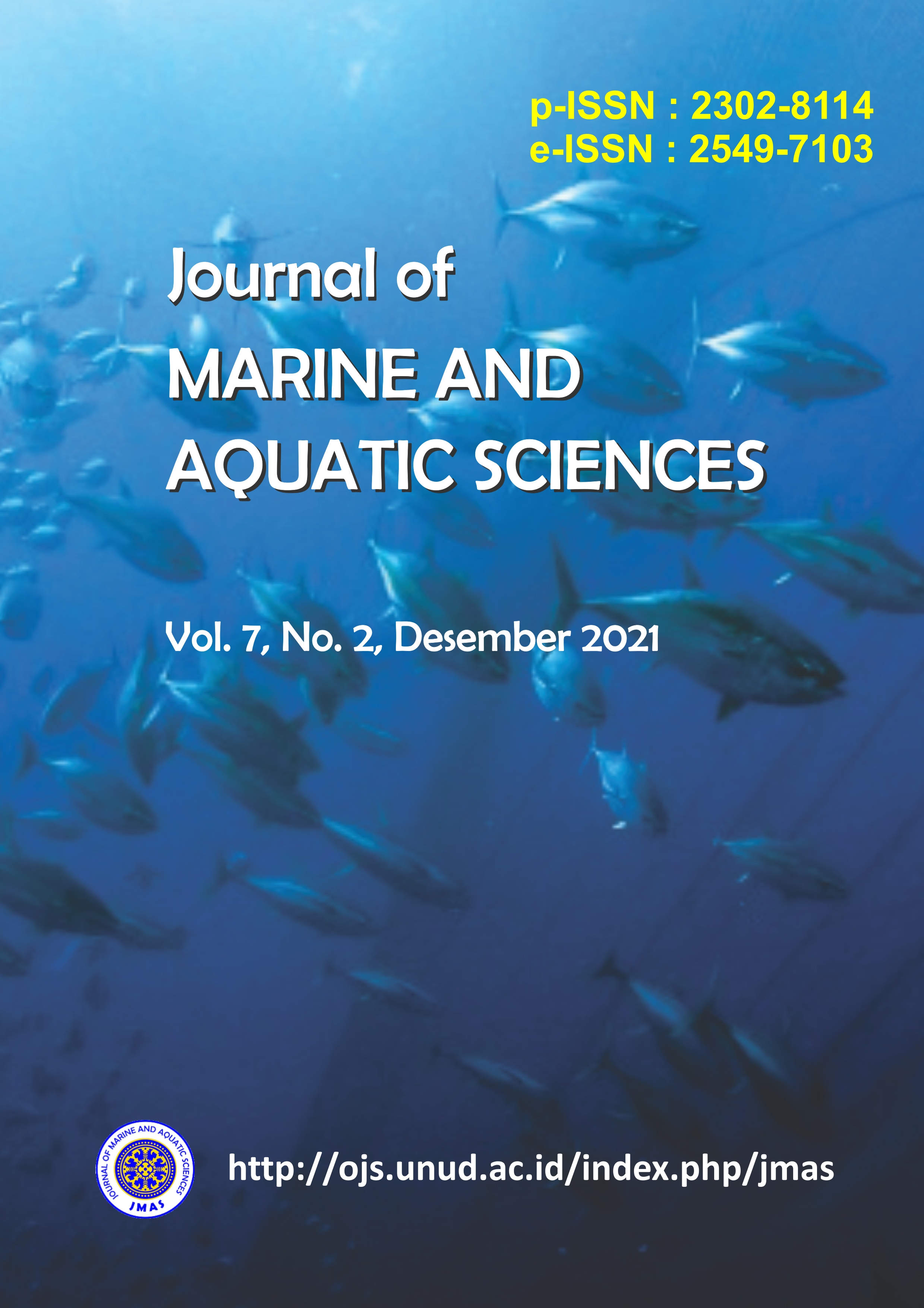Pemetaan Habitat Dasar Perairan Dangkal Menggunakan Citra Satelit SPOT-7 di Pulau Nusa Lembongan, Bali
Shallow water habitat, SPOT-7, Depth Invariant Index, Accuracy, Nusa Lembongan
Abstract
Shallow water habitat is one of the regions that has high dynamics and has an important role are ecologically and economically. The high dynamics of the ideal shallow water habitat is always followed by updating information so that an overview of the area is obtained in accordance with reality. Remote sensing technology is one of the technologies that can be used for mapping natural resource studies such as mapping of shallow water habitats with the satellite imagery. This study aims to map the distribution of shallow water habitats using SPOT-7 satellite imagery on Nusa Lembongan Island, Bali and test the level of accuracy. The method used true color composite and DII (Depth Invariant Index) transformation and uses the maximum likelihood classification. The classification scheme used 6 classes, namely sand, seagrass, macro algae, rubble, live coral, and dead coral. The results of this study indicate the distribution of shallow water habitat on Nusa Lembongan Island, Bali spread equally based on the level of water depth with a total area of shallow water habitat of 453.41 ha. The results of mapping accuracy test showed the overall accuracy of the DII transformation classification results is better than the composite image classification results with an overall accuracy of 75.43% and a kappa coefficient is 0.71. So from these results can be said that used of a water column correction with the DII method can improve image accuracy in mapping shallow water habitats.
Downloads

This work is licensed under a Creative Commons Attribution 3.0 International License.
Copyright 2012 - 2023 Journal of Marine and Aquatic Sciences (JMAS)
Published by Fakultas Kelautan dan Perikanan Universitas Udayana, Denpasar, Bali, Indonesia
JMAS (p-ISSN 2302-8114; e-ISSN 2549-7103)


